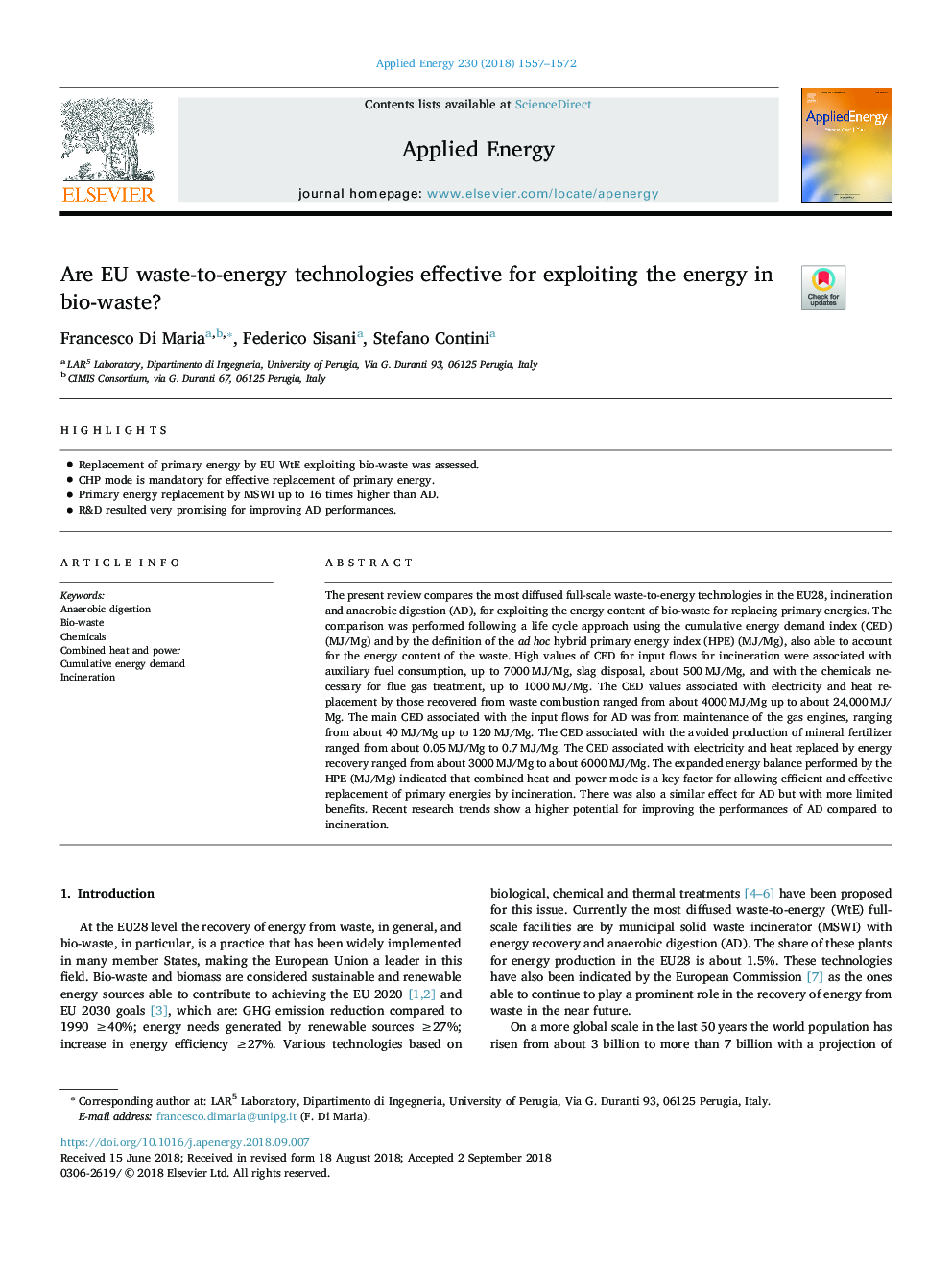| Article ID | Journal | Published Year | Pages | File Type |
|---|---|---|---|---|
| 10131602 | Applied Energy | 2018 | 16 Pages |
Abstract
The present review compares the most diffused full-scale waste-to-energy technologies in the EU28, incineration and anaerobic digestion (AD), for exploiting the energy content of bio-waste for replacing primary energies. The comparison was performed following a life cycle approach using the cumulative energy demand index (CED) (MJ/Mg) and by the definition of the ad hoc hybrid primary energy index (HPE) (MJ/Mg), also able to account for the energy content of the waste. High values of CED for input flows for incineration were associated with auxiliary fuel consumption, up to 7000â¯MJ/Mg, slag disposal, about 500â¯MJ/Mg, and with the chemicals necessary for flue gas treatment, up to 1000â¯MJ/Mg. The CED values associated with electricity and heat replacement by those recovered from waste combustion ranged from about 4000â¯MJ/Mg up to about 24,000â¯MJ/Mg. The main CED associated with the input flows for AD was from maintenance of the gas engines, ranging from about 40â¯MJ/Mg up to 120â¯MJ/Mg. The CED associated with the avoided production of mineral fertilizer ranged from about 0.05â¯MJ/Mg to 0.7â¯MJ/Mg. The CED associated with electricity and heat replaced by energy recovery ranged from about 3000â¯MJ/Mg to about 6000â¯MJ/Mg. The expanded energy balance performed by the HPE (MJ/Mg) indicated that combined heat and power mode is a key factor for allowing efficient and effective replacement of primary energies by incineration. There was also a similar effect for AD but with more limited benefits. Recent research trends show a higher potential for improving the performances of AD compared to incineration.
Keywords
Related Topics
Physical Sciences and Engineering
Energy
Energy Engineering and Power Technology
Authors
Francesco Di Maria, Federico Sisani, Stefano Contini,
